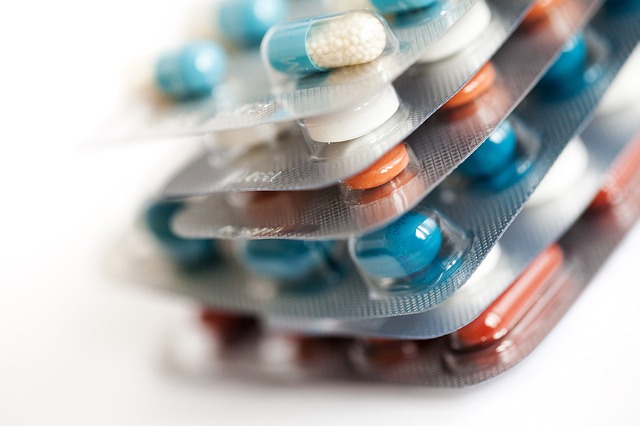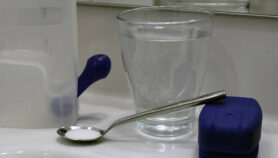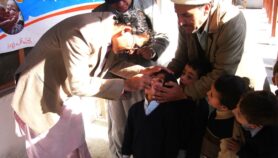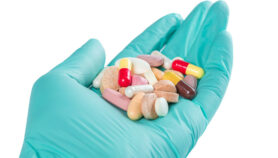Send to a friend
The details you provide on this page will not be used to send unsolicited email, and will not be sold to a 3rd party. See privacy policy.
That old reliable antibiotic pill which you take for sore throat, toothache, diarrhoea and for just about every other illness may soon be useless if nothing is done about the way the drug is misused and abused.
The WHO sounded this alarm in a 257-page report of 114 countries released this April, entitled “Antimicrobial Resistance: Global Report on Surveillance”. This is the UN agency’s first-ever extensive study of the problem when antibiotics are overly used or wrongly prescribed, causing bacteria to mutate to a point they become resistant to antibiotics. [1]
Antimicrobial resistance is a “burgeoning problem” particularly in South-East Asia, the WHO report says. “Two commonly-used third generation antibiotics, cephalosporins and fluoroquinolones, have developed high levels of E. coli resistance in this region.”
“Antimicrobial resistance threatens the effective prevention and treatment of an ever-increasing range of infections caused by bacteria, parasites, viruses and fungi. An increasing number of governments around the world are devoting efforts to a problem so serious that it threatens the achievements of modern medicine. A post-antibiotic era — in which common infections and minor injuries can kill — far from being an apocalyptic fantasy, is instead a very real possibility for the twenty-first century,” the WHO warns.
Shin Young-Soo, regional director of WHO Western Pacific, notes that the misuse of antibiotics becomes “a greater threat when combined with the forces of globalisation —global trade, travel, migration and medical tourism can spread drug-resistant pathogens to every corner of the world in a matter of days”. [2]
Contributing to the development of antimicrobial resistance is the widespread use of antibiotics not only in human healthcare but also in food preservation and animal care. Bacteria are hardy organisms and the mutated genes can be shared among other bacteria, increasing the spread of resistance.
“Confounding factors are the facts that patients overuse antibiotics, doctors frequently overprescribe their use and in some countries, antibiotics can be readily purchased over the counter,” explains National University of Singapore professor Roger Beuerman in a study. [3]
Antibiotics for the future
So what can we do about antimicrobial resistance?
First, scientific research on antibiotics for the future must step up. Drug manufacturers should invest and be given incentives to continue research on new drugs to fight bacteria before the present generation of antibiotics lose their effectiveness.
The race between science and disease is unending. As science comes up with a solution, a variation of the disease develops.
Few of us remember when the first antibiotic, penicillin, was discovered by Alexander Fleming who received the Nobel Prize in 1928 for the achievement. The name came from the source, a mould called Penicillium.
“It was indeed an incredible event as the balance of morbidity from infections was quickly shifted towards recovery rather than death,” recalls Beuerman.
For a long time, the world was safe from most bacteria. But bacteria developed resistance to the drug. Today it will not be possible to eliminate all resistant bacteria, scientists warn, even as they continue to invent new antibiotics.
Beuerman says that 20 new antibiotics have been approved since 2000 and about 40 new ones are in the pipeline.
A unique class of antimicrobials is found in nature — including soil bacteria — that function similarly to those derived from fungus. These antimicrobials protect organisms from pathogenic invasion and are called host defense peptides, or defensins. Of these new antibiotics, 11 are from natural products and nine are synthetic. However, the antibiotics from natural sources like fungi and mould are vulnerable to bacterial resistance and similar issues are expected when their usage increases.
Regulating use of antibiotics
The second most important thing we can do is to slow down and minimise antimicrobial resistance before it is too late. The WHO has started the ball rolling with this first extensive study of the problem and its serious implications.
The WHO report urges setting up more analytical laboratories and healthcare systems in developing countries to gather more significant data on drug-resistant pathogens.
To give this WHO report the importance it deserves, we urge that an international conference be organised to discuss it and to agree on follow-up steps.
The major links in the health care chain — patients, medical doctors and other health personnel, drug use regulators, drug manufacturers, businesses dealing with medicines, policymakers, schools and mass media — must be represented at this conference and enlisted to contribute to the solution of the problem.
Some commonsensical recommendations to alleviate the problem:
One, it is time that patients are educated in the proper use — not overuse — of antibiotics.
Two, medical doctors and health personnel need to be held accountable when they overprescribe antibiotics. They should require standard sensitivity tests before prescribing these drugs.
Three, pharmacies must be carefully regulated in dispensing antibiotics and other drugs.
Four, national governments must be prodded to take the problem of antimicrobial resistance seriously and to come up with laws and policies regulating antibiotic use.
Five, schools and mass media must take a major role in educating the public about the dangers of the overuse, wrong use and abuse of antibiotics.
The problem has become a medical conundrum of our times and it needs to be addressed urgently. This WHO report should serve as a wake-up call and lead to action. To head off an unthinkable post-antibiotic era, we need WHO leadership, international scientific collaboration, and political will at its best on the national level.
Crispin Maslog is a Manila-based consultant for the Asian Institute of Journalism and Communication. A former journalist, professor and environmental activist, he worked for the Press Foundation of Asia and the International Rice Research Institute.
This article has been produced by SciDev.Net's South-East Asia & Pacific desk.
References
[1] World Health Organization Antimicrobial resistance: Global report on surveillance 2014 (WHO, April 2014)
[2] WHO Western Pacific Region WHO’s report on antibiotic resistance reveals serious, worldwide threat to public health (WHO News Release, 30 April 2014)
[3] Roger Beuerman A Crisis in the Development of Antibiotics (Asia-Pacific Biotech News, Vol. 16, No. 2, 2012)














